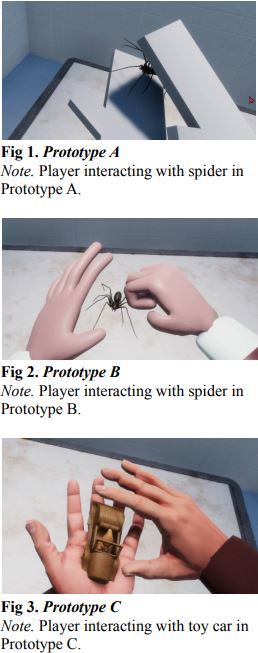How do different visual representations of a player avatar in Virtual Reality affect player arousal?
Imagine stepping into a virtual world that feels so real, it’s like you’re actually there. For my bachelor’s thesis, my friend and I wanted to explore this concept. Thus we set forth on a mission to make a dent in VR discoveries and development.
In our bachelor’s thesis, titled “How do different visual representations of a player avatar in Virtual Reality affect player arousal?”, Jad Tawbi and I delved into the exciting realm of Virtual Reality to explore the impact of visual realism on player engagement. VR is revolutionizing the way we consume content, offering a whole new level of immersion called presence. It’s that magical feeling of truly being inside a virtual environment and accepting it as reality. To uncover the secrets behind enhancing this presence, we combined theories from game design, VR, and perception to develop prototypes that tested the effect of avatar realism.
In our study, we created three prototypes with increasing levels of visual polish and invited 36 adults to participate. Using a measure called galvanic skin response (GSR), we assessed their arousal levels and the degree of presence they experienced. The participants were given virtual objects to interact with, including a toy car and, brace yourself, a virtual spider.
The results were fascinating. By analyzing the data using statistical techniques, we discovered that higher visual fidelity in player avatars did not necessarily lead to increased arousal responses, rather different behavioural patterns emerged across the protypes, suggesting a heightened sense of embodiment. We argue that the findings validate the implementation of higher visual fidelity in player avatars, in pursuit of impacting a subject’s level of presence when exposed to a virtual stimuli.
These findings may have implications for various fields. Game designers can leverage this knowledge to create more captivating and immersive virtual experiences. Psychotherapists might explore VR as a tool to induce a state of immersion for therapeutic purposes. We are very excited to have contributed to the advancement of VR technology and its potential to transport individuals into extraordinary digital realms. So, if you’re as intrigued as we are by the power of visual representations in VR, feel free read through our paper.
